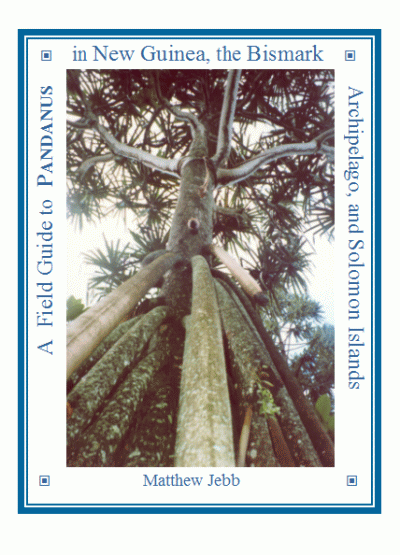
Project Background
Pandanus is a big genus, with at least 600 species found from Africa to the Pacific. In New Guinea and the Solomon Islands, 74 species are known, and eight new taxa are included in this guide. At first sight, Pandanus often strike people as uniform in appearance, and the field notes of collectors reveal that the plants are almost always regarded as ‘Pandanus-like’, and very few details of the considerable variation in overall appearance have been noted. The illustrations in this guide should demonstrate that the uniformity of Pandanus trees is entirely superficial.
Like Palms, Pandans can only be studied properly in the field, and this book attempts to provide the full extent of our herbarium knowledge in a format that can be taken to the field and compared with the living plants. It will be the first field guide to the genus to have been produced.
Each species (or in some cases several, closely related species) has a page to itself in this A4 sized field guide. A brief description is given of the habit, size, proproots, leaves, cephalium and drupes, male inflorescence, and ecology of the species. For each species there are drawings of the leaves, fruits, seeds and general habit of the plant. Distribution maps show information gathered from the literature, and my own observations, but chiefly from herbarium material examined at Kew, Leiden and Lae.
Nomenclatural detail has been removed to an appendix, as has a taxonomic commentary. Other appendices cover the ecological and altitudinal ranges of species in New Guinea; a bibliography of edible Pandanus in New Guinea; an annotated bibliography of selected publications; a listing of specimens examined; and sources of illustrations used in the guide.
You may download a pdf version of the book in two parts here.
The book comprises two parts:
PART 1 comprises 97 pages including an introduction and full page illustrations of 74 species plus Sararanga
PART 2 comprises seven appendices: a taxonomic commentary; a list of Panadanus names for the region; a listing by altitude and habitat; a bibliography; condensed versions of sundry Pandanus publications; a listing of specimens examined; and finally source material for the illustrations used.
